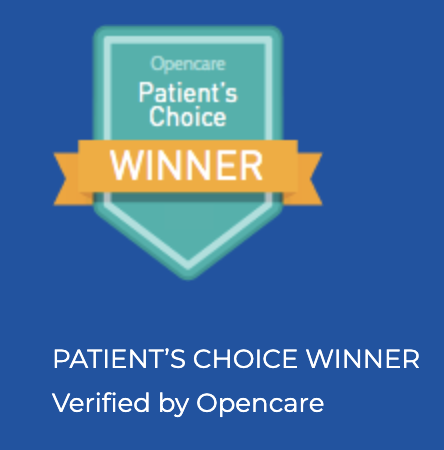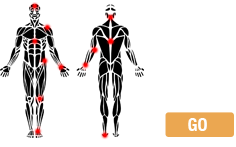Concussions occur when an external mechanical force causes brain dysfunction and usually result from a violent blow or jolt to the head or body.

Signs and symptoms of a concussion
- A headache or a feeling of pressure in the head
- Sensitivity to light or sound
- Fatigue
- Sleep disturbances
- Delayed response to questions
- Confusion or brain fog
- Amnesia surrounding the traumatic event
- Dizziness, vertigo or “seeing stars”
- Tinnitus aka “Ringing in the ears”
- Nausea and/or Vomiting
- Slurred speech
- Appearing dazed
Some symptoms of concussions may be immediate or delayed in onset by hours or days after injury, such as:
Cognitive complaints could consist of:
- Concentration and memory complaints
- Irritability and other personality changes (ideally ask mother or spouse)
- Psychological adjustment problems and depression
- Disorders of taste and smell
Symptoms in children
Head trauma is very common in young children. But concussions can be difficult to recognize in infants and toddlers because they may not be able to describe how they feel. Nonverbal clues of a concussion may include:
- Appearing dazed
- Listlessness and tiring easily
- Irritability and crankiness
- Loss of balance and unsteady walking
- Crying excessively or colic
- Change in eating or sleeping patterns
- Lack of interest in favorite toys
General Treatment of Concussion
The best treatment immediately after any concussion is the same as any other injury:
REST: Rest has two very important features when it comes to concussion. First, it prevents the brain from being injured any further and secondly, rest allows optimal allocation of resources to all maximal recovery to occur.
COMPLETE PHYSICAL and COGNITIVE REST is prescribed during the initial recovery period. This means: no school, no homework, no texting, no computer/video games, no television, no physical activity until the symptoms of concussion begin to subside. As the symptoms improve a slow introduction of demand may be started.
As you improve a slow and graded rehabilitation can begin.
At Physioactive we recommend that sensory and cognitive activities are begun first and then a gradual increase in physical activity, with each stage separated by a period of at least 24 hours. This process must be monitored by a clinician with extensive training in concussion injuries, as there are numerous signs which could delay recovery if not properly addressed. In an ideal world, the patient should have NO SYMPTOMS as these demands are increased. If symptoms are encountered, this is an indication the demands on the brain are too much and should be reduced. The patient should drop back to the previous stage for a 24-hour period before attempting the next stage again. The final stages involve monitored increases in one’s physical exertion and to assess blood flow within the brain, as well as extensive testing of neurological, mental and physical systems, to ensure that your brain has recovered and you are safe to return to activity without causing further damage. Most patients will make a quick and full recovery.
Post-Concussion Syndrome
Post-concussion syndrome is a clinical term when concussion symptoms that last longer than a week. If the symptoms persist or do not begin to improve, or in some cases, new symptoms can begin, rehabilitation becomes an absolute necessity.
Mild or Minor Traumatic Brain Injury (mTBI)
All concussions are brain injuries. The term mTBI has been used to distinguish between concussions (aka mTBI) and TBI which encompass more severe brain injuries, resulting in paralysis, coma, loss of cognition, memory or other mental and physical functions. Many brain injuries, especially when the person does not lose consciousness, go unnoticed and are never reported… and therefore never treated. Any injury to the brain is serious so we don’t love this definition or terminology atPhysioactive.
The PhysioActive Difference: The PACT Complete Concussion Program
Our Assessment:
We don’t just prescribe rest and exercise based on general guidelines. It is specifically tailored to you. If you injured your knee, the therapy would be very different depending on if you had a minor sprain, injured your meniscus or completely ruptured your ACL (Anterior cruciate ligament). General rules are just that, general. Telling someone to rest until the symptoms go away doesn’t make sense when rehabilitating the body anywhere else so why is that prescribed when rehabilitating the most important part of our body — the brain.
We look at all the systems that may have been affected by your brain injury (concussion). We assess all the brain functions outlined below, but we also assess the neck and upper back. If you receive a blow big enough to cause a brain injury you will also have injured the tissues of your neck.
We also assess the movements of the cranium. This is essential to proper repair of the brain. Our osteopathic practitioners and cranial therapists will assess the bones of the face and cranium.
Our Treatment:
At PhysioActive, our treatment focuses on where you need the treatment the most. Our multi-modal approach (incorporates education, hands-on or manual therapy, exercise, and treatment enhancing modalities) to care is shown in the evidence to optimize outcomes.
We don’t use a recipe protocol. Every concussion patient is different and thus requires different interventions to optimize healing. We succeed where others fail. One of our greatest joys is helping clients that have been unsuccessful in treating their concussions with standard approaches to care. Our clients are so happy with their improvements, and only wish they had come to us first.
Our Technology:
At Physioactive we incorporate the most up-to-date and evidence-based technologies to compliment your hands-on therapy. We may use iLS to help calm the nervous system and retrain the eyes and ears and the vestibular system to make regular exercises more effective. We may use MBS and laser to improve the healing of the neck and nervous system. On rarer occasions, we will use other physiotherapy modalities to assist in healing.



